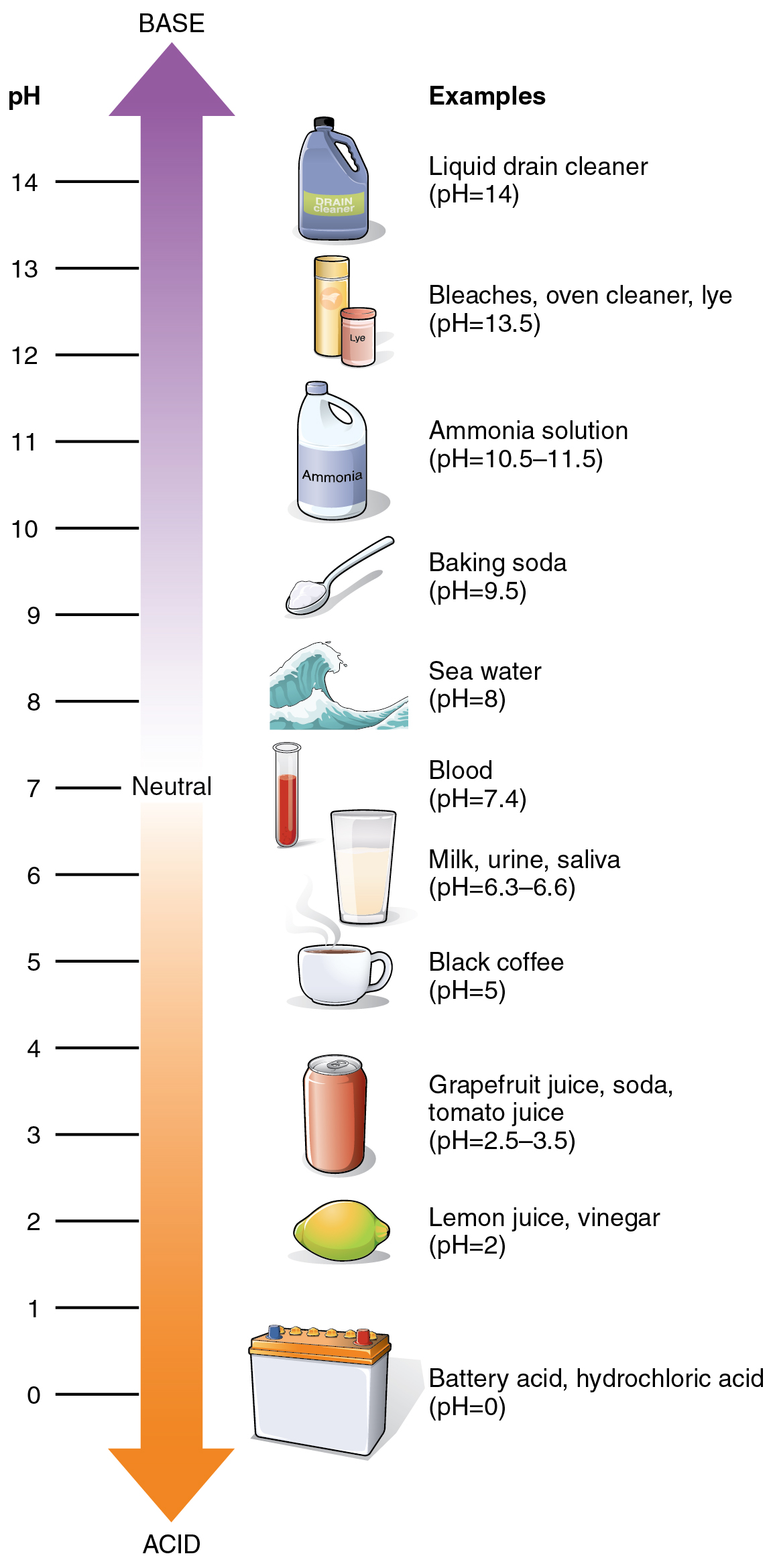In this unit, we learned about the important chemistry that biologists need to know and the 4 macro molecules.
Bonds between atoms can happen in 3 different ways. There are ionic bonds, which happen when an atom gains or loses an electron, covalent bonds, when electrons are shared between atoms, and Hydrogen bonds, where positive charges attract to the negative charges. Water is a unique substance because it is polar (charged), cohesive and adhesive, and the solvent for many solutions. Acids and bases are measure on the pH scale from 0-14.

The 4 macro molecules are carbohydrates, lipids, proteins, and nucleic acids. Carbohydrates are made of rings of C, H, and O. They can be mono, di, or poly saccharides. Lipids are fatty molecules that make up membranes and store energy. They are chains of fatty acids (C&H). Phospholipids have heads that are hydrophilic, and hydrophobic tails. Proteins are made of amino acids, and there are two main types: structural proteins and enzymes. Enzymes speed up the reactions that occur inside a body, reducing the activation energy, by taking in a substrate into the active site, and returning a product. Changes in pH and temperature can cause an enzyme to denature, or deteriorate. Nucleic acids such as DNA (2 stranded) and RNA (single stranded) are made of nucleotides, which consist of a nitrogen base, a sugar, and a phosphate group. Overall, we learned the main molecules that help our bodies function, why they are important, and what they are used for.

Through the cheese lab, I learned how to adjust conditions in a substance to see how well the enzyme works. This helped me realize how a good experiment is planned and designed, and how enzymes can be denatured by pH and temperature. In the sweetness lab, I learned how depending on the amount of rings a sugar has, it can taste really sweet or really bland.

I want to learn more about denaturation. What really happens to the enzyme and where does it go? Is it just a dead enzyme that remains in your body? I also didn't fully understand polarity and how polar and non polar substances interact with each other.
Bonds between atoms can happen in 3 different ways. There are ionic bonds, which happen when an atom gains or loses an electron, covalent bonds, when electrons are shared between atoms, and Hydrogen bonds, where positive charges attract to the negative charges. Water is a unique substance because it is polar (charged), cohesive and adhesive, and the solvent for many solutions. Acids and bases are measure on the pH scale from 0-14.

The 4 macro molecules are carbohydrates, lipids, proteins, and nucleic acids. Carbohydrates are made of rings of C, H, and O. They can be mono, di, or poly saccharides. Lipids are fatty molecules that make up membranes and store energy. They are chains of fatty acids (C&H). Phospholipids have heads that are hydrophilic, and hydrophobic tails. Proteins are made of amino acids, and there are two main types: structural proteins and enzymes. Enzymes speed up the reactions that occur inside a body, reducing the activation energy, by taking in a substrate into the active site, and returning a product. Changes in pH and temperature can cause an enzyme to denature, or deteriorate. Nucleic acids such as DNA (2 stranded) and RNA (single stranded) are made of nucleotides, which consist of a nitrogen base, a sugar, and a phosphate group. Overall, we learned the main molecules that help our bodies function, why they are important, and what they are used for.

Through the cheese lab, I learned how to adjust conditions in a substance to see how well the enzyme works. This helped me realize how a good experiment is planned and designed, and how enzymes can be denatured by pH and temperature. In the sweetness lab, I learned how depending on the amount of rings a sugar has, it can taste really sweet or really bland.

I want to learn more about denaturation. What really happens to the enzyme and where does it go? Is it just a dead enzyme that remains in your body? I also didn't fully understand polarity and how polar and non polar substances interact with each other.
No comments:
Post a Comment